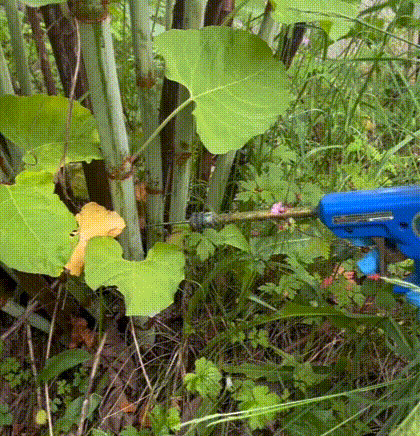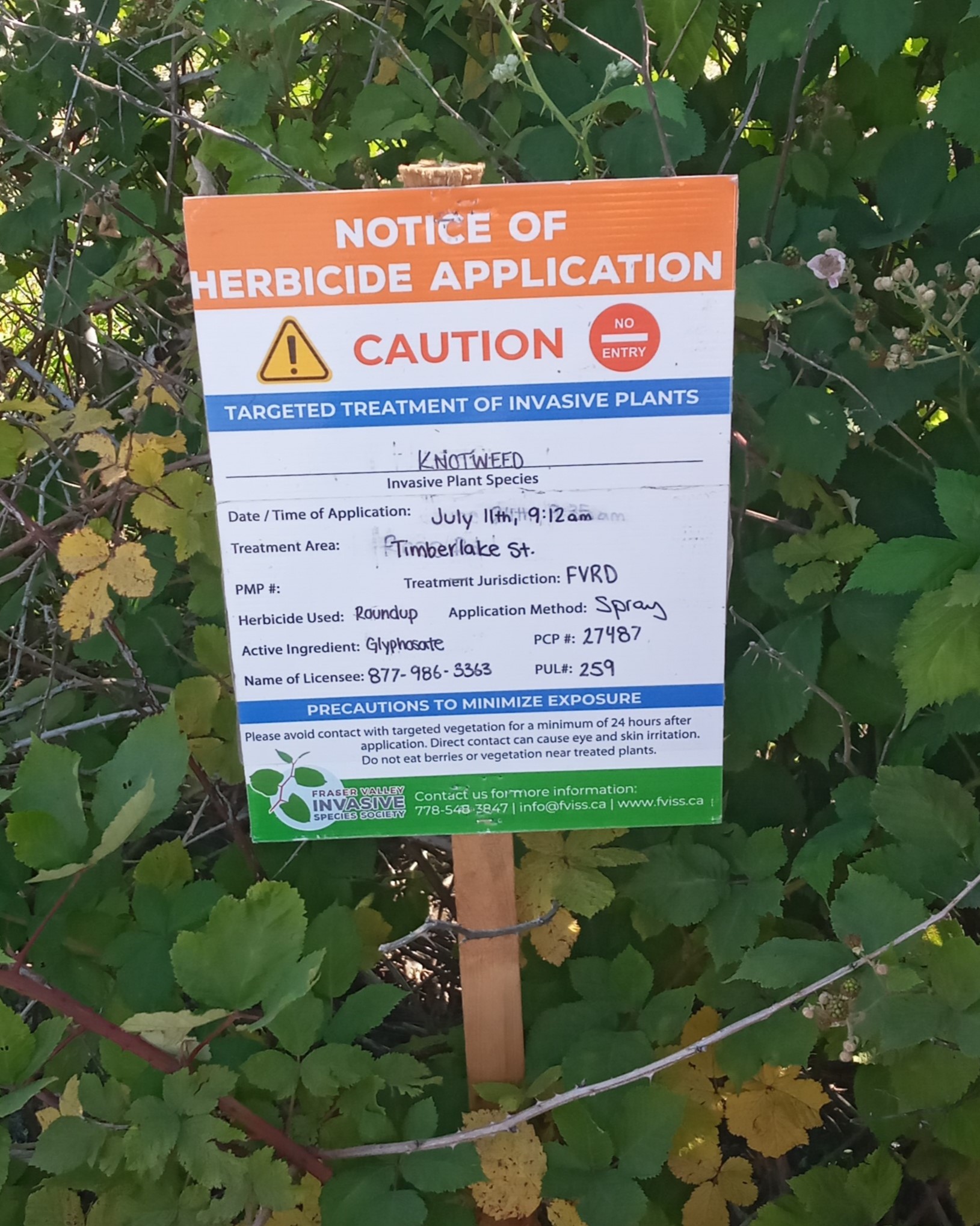Treating Knotweed
Posted Date: November 27, 2024
Tags: Blog Post
FVISS coordinates knotweed treatment throughout the Fraser Valley. To help people understand what that process entails, we've outlined the typical process.
Once knotweed has been positively identified, there are a few steps that are taken to determine the most effective management option.
Knotweed is best treated with the application of a suitable herbicide due to its extensive root systems and its ability to grow new plants from leftover root and stem fragments. Glyphosate based herbicides, such as RoundUp, are commonly used.
Manual or mechanical removal, such as cutting, mowing, digging, pulling, or burning impact the above ground vegetation, but do not target the below ground rhizomes, which is essential in the successful treatment of knotweed. Mechanical removal can also encourage the knotweed to grow more aggressively, effectively worsening the infestation.
Step 1: Crew arrives at the site. They complete a search of the area to find all the knotweed plants in the area. Knotweed plants can emerge at different speeds (i.e. in the shade), so it is important to be looking for small plants in the surrounding area.
Step 2: Crews identify whether knotweed is within 10 meters of a body of water or a well. According to the Integrated Pest Management Act and Regulation, this area is a Pesticide Free Zone (PFZ). However, if the applicator is using glyphosate and using a selective treatment method, the PFZ can be reduced to 1 meter from the well or water body. Crews will then indicate where the PFZ boundary is located with flagging tape or a temporary marker on the ground.
Step 3: Crews check temperature, and wind speed and direction to ensure safe and effective application of the herbicide.
Step 4: Other considerations are noted and precautions are placed, such as covering and protecting other garden plants to prevent herbicide from coming into contact with them. For example, a rose bush is covered in a garbage bag to protect it while treating knotweed.

Step 5: Crews wear required PPE according to the label on the herbicide that they are working with.
Step 6: A treatment method to apply the herbicide is selected.
There are three different herbicide application methods commonly used, either alone or together, depending on specific site needs.
1. Foliar Spray

Crews use either backpack sprayers or handheld sprayers to apply the herbicide to both the top and underside of the leaves. Crews wear the recommended protective gear according to the pesticide label, such as gloves, masks and eye protection, for personal safety. In the case that the knotweed is growing in or near a garden or around other plants that the homeowner wants to save, tarps or garbage bags can be used to avoid any pesticide drift coming into contact with those plants.
2. Stem Injection

In some cases, stem injection may be a suitable treatment option. Crews use a stem injector, which is a piece of equipment with an herbicide reservoir and an application needle, to inject herbicide into the hollow stems of the knotweed. This treatment method allows for very precise application of herbicide and can avoid drift into PFZs.
3. Knock and Spray
When the knotweed is growing inside the PFZ, the “knock and spray” or “bend and spray” technique may be used. The knotweed plants are gently knocked away from the PFZ, avoiding any breakage to the plant. The parts of the knotweed plants that fall outside of the PFZ may be treated.
Step 7: Treatment signs are posted and are left for at least 24 hours.

Knotweed sites require multiple treatments over many years. After the initial treatment, sites are returned to annually to monitor for knotweed regrowth and, if present, treat the plants. With knotweed's strong ability to survive as dormant rhizomes, sites can't be truly considered to be free of knotweed until no knotweed has regrown in 20 years.


